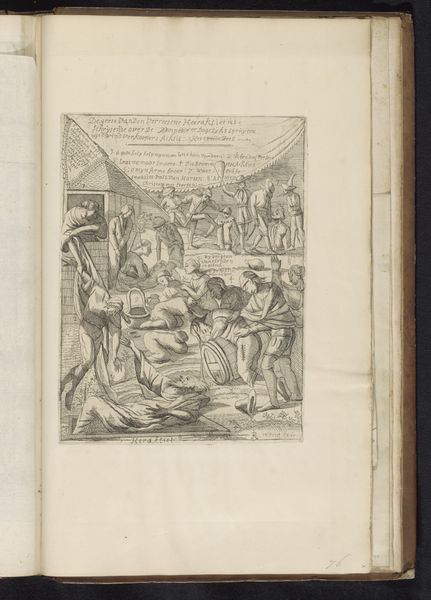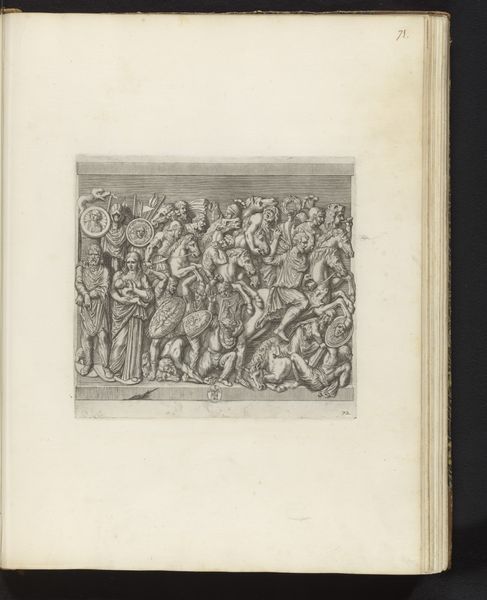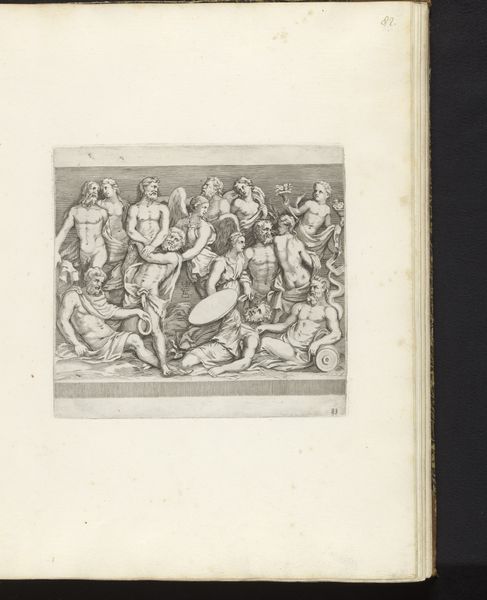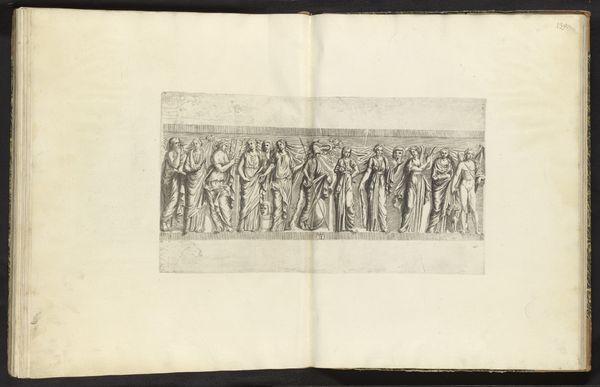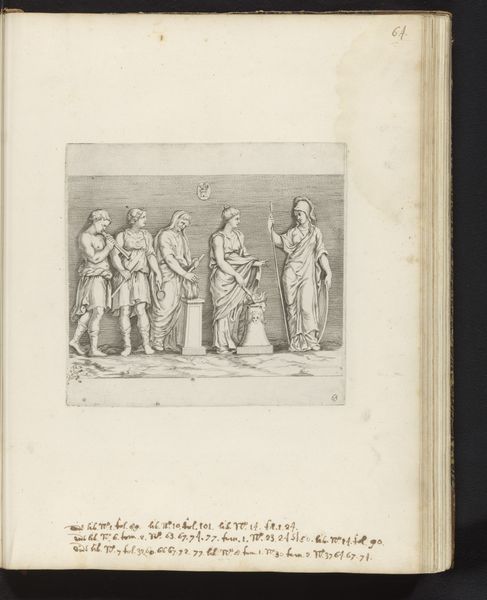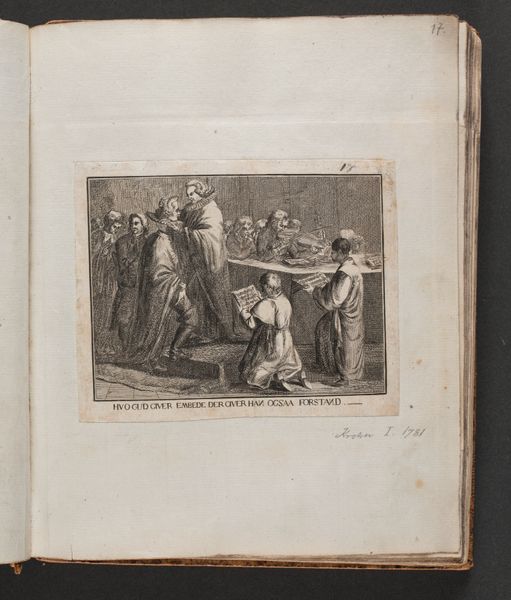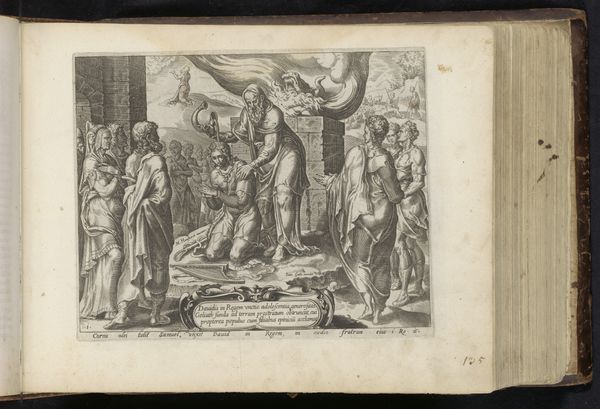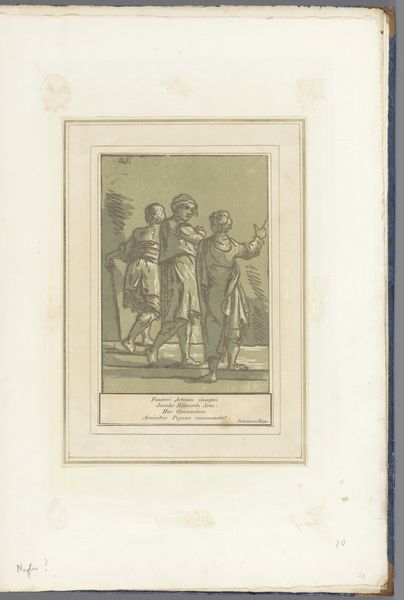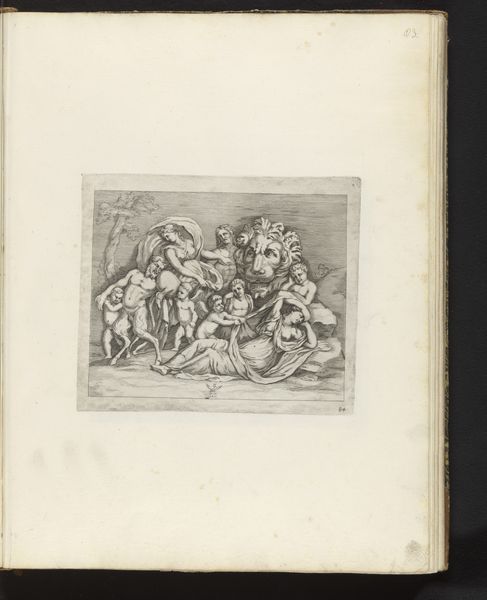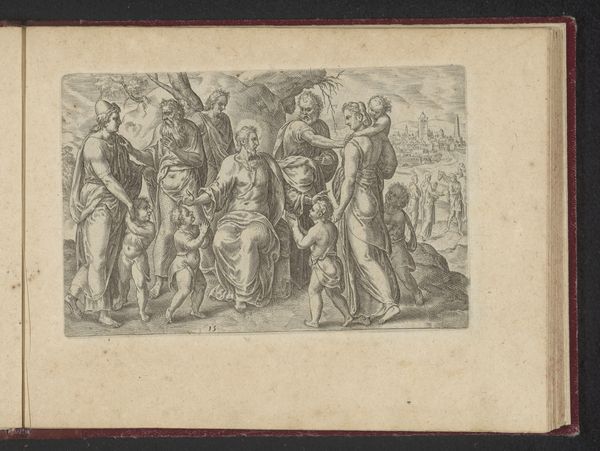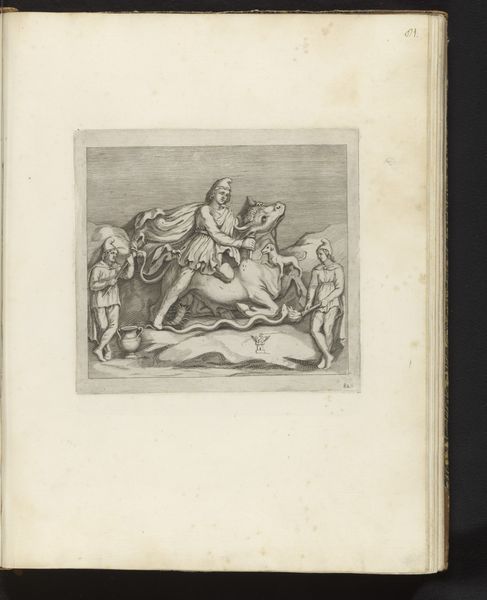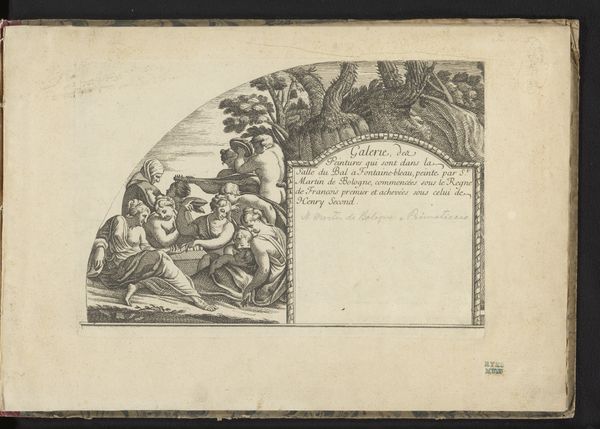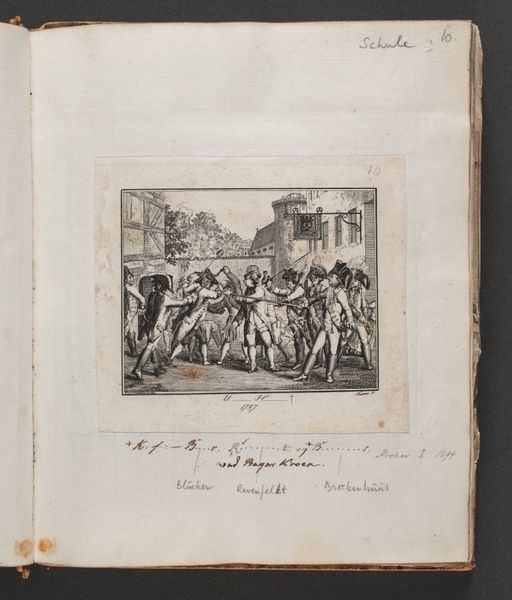
drawing, print, etching, pen, engraving
#
drawing
#
aged paper
#
book binding
#
paper non-digital material
#
narrative-art
# print
#
etching
#
sketch book
#
personal sketchbook
#
coloured pencil
#
sketchbook drawing
#
pen
#
watercolour bleed
#
history-painting
#
sketchbook art
#
engraving
#
watercolor
Dimensions: 115 mm (height) x 145 mm (width) (plademaal)
Curator: Looking at "U(lykkelige H(ændelser)" Nr. 5 by Georg Christian Schule, dating to 1787. We see a drawing rendered through printmaking techniques—etching and engraving specifically—housed in a sketchbook. Editor: My first thought is of theater, some kind of grand performance unfolding on this aged paper. It has such drama, this swirling crowd, and that figure, almost god-like in the center. Curator: Yes, the sketchbook context is crucial here. We're seeing Schule’s preparatory work, a testing ground. Consider the labour invested in etching and engraving. These techniques require specific tools, chemicals, and meticulous process, to prepare a copper plate, and then each print must be meticulously hand cranked, or pressed. This is hardly a disposable sketch; it is about carefully considered work to build narratives. Editor: That's fascinating. For me, that central figure immediately pulls the eye. The way he's posed, the angle of his arm, reminds me of classical depictions of prophets or even Apollo. Note the two people wielding weapons on the left side of the composition, juxtaposed against this seemingly heavenly being, suggesting some kind of moral conflict at play. Curator: It speaks to how artistic knowledge circulated at the time. Artists learned by copying and adapting from existing artworks to prepare future illustrations or compositions. What’s interesting is Schule wasn’s producing standalone prints for high-end collectors, he made smaller, more ephemeral prints bound within almanacs that spoke more to popular consumption. Editor: Almanacs as precursors to magazines… It speaks to something widely accessible and readily distributed and digested across culture at the time. The title suggests 'unhappy events' despite the seeming classical influence. Maybe there's an intentional discordance there? Curator: Absolutely. Think about the late 18th century. There’s the Age of Enlightenment coupled with rising social and political upheaval brewing into revolution, which impacted modes of production too. An increase in popular art and a diversification of consumerism, making these printed images widespread. Editor: This blending of accessibility and serious social themes...it creates a tension. It isn't purely decorative or didactic. Curator: Precisely, it's a moment where craft, industry, and commentary collide, which complicates traditional ideas of high art production. Editor: Studying the symbolism embedded in prints can open new insights on consumerist values and behaviors. Thank you for highlighting all those labor complexities that underpin Georg Schule's creative practices! Curator: And likewise, thank you for elucidating on some historical allegories depicted! It's a work of art with many intriguing layers of social critique embedded within its materials.
Comments
No comments
Be the first to comment and join the conversation on the ultimate creative platform.
